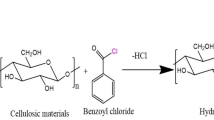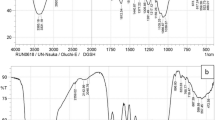Abstract
During the past decades, a significant increase occurred in accidental oil spill in the aquatic environments. In this regard, oil spill in Marine freshwater is still considered as a major environmental hazard. In this research, the experimental data on the sorption capacity of expanded perlite to crude oil were correlated with the equilibrium isotherm of Langmuir, Freudlich, Tempkin and the three parameter Redlich-Peterson isotherms. The results obtained from each specified isotherms were compared and accuracy of the models were favorably discussed. Accuracy of each model using the error function were evaluated. Moreover, the effect of type of objective function on the final results was investigated. To bring up the idea; the sum of square of the average squares of the errors, the sum of the squares of the errors, the hybrid fractional error function, Marquardt’s percent standard deviation and Chi-Square objective function were used and the accuracy was obtained using each objective function. The results showed that the Redlich-Peterson model can better represent the equilibrium isotherm data for the crude oil to be up taken on the expanded perlite.
Similar content being viewed by others
References
Abdel-Ghani, N. T.; Elchaghaby, G. A., (2007). Influence of operating conditions on the removal of Cu, Zn, Cd and Pb ions from wastewater by adsorption. Int. J. Environ. Sci. Tech., 4(4), 451–456 (6 pages).
Abdel-Ghani, N. T.; Hegazy, A. K.; El-Chaghaby, G. A., (2009). Typha domingensis leaf powder for decontamination of aluminium, iron, zinc and lead: Biosorption kinetics and equilibrium modeling. Int. J. Environ. Sci. Tech., 6(2), 243–248 (6 pages).
Ahalya, N.; Kanamadi, R. D.; Ramachandra, T. V., (2005). Biosorption of Chromium (VI) from aqueous solution by the husk Bengal gram (Cicer Arientinum). Eelect. J. Biotech. 8(3), 258–264 (7 pages).
Ahalya, N.; Ramachandra, T. V.; Kanamadi, R. D., (2003). Biosorption of Heavy Metals. Res. J. Chem. Environ., 7(4), 71–79 (9 pages).
Ankit, B.; Silke, S., (2008). Assessment of biosorption mechanism for Pb binding by citrus pectin. ep. Purif. Tech., 63(3), 577–581 (5 pages).
Aravindhan, R.; Bhaswant,SM.; Sreeram, K., J.; Raghava R., J.; Balachandran, U., N., (2009). Biosorption of cadmium metal ion from simulated wastewaters using Hypnea valentiae biomass: A kinetic and thermodynamic study. Biores. Tech., 101(5), 1466–1470 (5 pages).
Asku, Z., (1992). The biosorption of Cu (II) by C. vulgaris and Z. ramigera. Environ. Tech., 13(1), 579–586 (8 pages).
Ceribasi, I. H.; Yetis, U., (2001). Biosorption of Ni (II) and Pb (II) by Phanerochaete chrysosporium from a bina ry metal system-Kinetics. Water SA., 27(1), 15–20 (6 pages).
Chen, C.; Wang, J. L., (2007). Characteristics of Zn2+ biosorption by Saccharomyces cerevisiae. Biomed. Environ. Sci., 20(6), 478–482 (5 pages).
Chien, M. K.; Shih, L. H., (2007). An empirical study of the implementation of green supply chain management practices in the electrical and electronic industry and their relation to organizational performances. Int. J. Environ. Sci. Tech., 4(3), 383–394 (12 pages).
Devi Prasad, A. G; Abdulsalam, M. A., (2009). Biosorption of Fe (II) from aqueous solution using Tamarind Bark and potato peel waste: equilibrium and kinetic Studies. J. Appl. Sci. Environ. San., 4(3), 273–282 (10 pages).
Friis; M. K., (1986). Biosorption of uranium and lead by Streptomyces longwoodenses. Biotech. Bioeng., 28(1), 21–28 (8 pages).
Fourest, E.; Roux, C. J., (1992). Heavy metal biosorption by fungal mycilial byproduct; mechanism and influence of pH. Appl. Microbiol. Biotech., 37(3), 399–403 (5 pages).
Gadd, G. M., (2009). Biosorption: Critical review of scientific rationale, environmental importance and significance for pollution treatment. J. Chem. Tech. Biotech., 84(1), 13–28 (16 pages).
Gadd, G. M.; De Rome, L., (1988). Biosorption of copper by fungal melanine. Appl. Microbiol. Biotech., 29(6), 610–617 (8 pages).
Galun, M.; Keller, P.; Malki, D.; Gallun, E.; Seigel, S.M.; Seigel, B. Z., (1983). Removal of uranium (VI) from solutions by fungal biomass and fungal wall related biopolymers. Science, 219(4582), 285–286 (3 pages).
Hanif, M. A.; Nadeem, R.; Bhatti, H. N.; Ahmad, N. R.; Ansari, T. M., (2007). Ni (II) biosorption by Cassia fistula (Golden Shower) biomass. J. Hazard. Mater., 139(2), 345–355 (11 pages).
Hashim, M. A.; Chu, K. H., (2004). Biosorption of cadmium by brown, green and red seaweeds. Chem. Eng. J., 97(2–3), 249–255 (7 pages).
Horsefall, M. J.; Spiff, A. I., (2005). Effect of metal ion concentration on biosorption of Pb2+ and Cd2+ by Caladium bicolor (Wild Cocoyam). Afr. J. Biotech., 4(2), 191–196 (6 pages).
King, P.; Anuradha, k.; Beena Lahari, S.; Prasanna Kumar, Y.; Prasad, V. S. R. K., (2007). Biosorption of zinc from aqueous solution using Azadirachta indica bark: Equilibrium and kinetics studies. J. Hazard. Mater., 152(1), 324–329 (7 pages).
Kratochvil, D.; Velesky, B., (1998). Biosorption of Cu from ferruginous wastewater by algal biomass. Water Res., 32(9), 2760–2768 (9 pages).
Mamoona, A.; Nadeem, M. Z.; Sadaf, Y.; Raziya, N., (2008). The use of Neem biomass for the biosorption of zinc from aqueous solutions. J. Hazard. Mater., 157(2–3), 534–540 (7 pages).
Mangollon, L.; Rodriquez, R.; Larrota, W.; Ramirez, N.; Torres. R., (1998). Biosorption of nickel using filamentous fungi. Appl. Biochem. Bioteh., 70–72(1), 593–601 (9 pages).
Masud, H. S.; Anantharaman, N., (2005). Studies on Cu (II) biosorption using Thiobacillus ferooxidans. J. Uni. Chem. Tech. Metall., 40(3), 227–234 (8 pages).
Nuhoglu, Y.; Malkoc, E.; Gurses, A.; Canpolat, N., (2002). The removal of Cu (II) from aqueous solutions by Ulothrix zonata. Biores. Tech., 85(3), 331–333 (3 pages).
Nwuche, C. O.; Ugoji, E. O., (2008). Effects of heavy metal pollution on the soil microbial activity. Int. J. Environ. Sci. Tech., 5(3), 409–414 (6 pages).
Priyantha, N.; Navaratne, A.; Ekanayake, C. B.; Ratnayake, A., (2008). Solvent extraction followed by ultraviolet detection for investigation of tetramethylthiuram disulfide at soil-water interface. Int. J. Environ. Sci. Tech., 5(4), 547–554 (8 pages).
Saeed, A.; Iqbal, M.; Akhtar, M.;W., (2005). Removal and recovery of lead (II) from single and multimetal (Cd, Cu, Ni, Zn) solutions by crop milling waste (black gram husk). J Hazard. Mater., 117(1), 65–73 (9 pages).
Sakaguchi, T.; Nakajima, A., (1991). Accumulation of heavy metals such as uranium and thorium by microorganisms. Smith, R.W., Misra.M. (Eds.), Mineral Bioprocessing. The Minerals, Metals and Materials Society.
Samarghandi, M. R.; Nouri, J.; Mesdaghinia, A. R.; Mahvi, A. H.; Nasseri, S.; Vaezi, F., (2007). Efficiency removal of phenol, lead and cadmium by means of UV/TiO2/H2O2 processes. Int. J. Environ. Sci. Tech., 4(1), 19–25 (7 pages).
Shah, B. A.; Shah, A. V.; Singh R. R., (2009). Sorption isotherms and kinetics of chromium uptake from wastewater using natural sorbent material. Int. J. Environ. Sci. Tech., 6(1), 77–90 (14 pages).
Soltanali, S.; Shams Hagani, Z., (2008). Modeling of air stripping from volatile organic compounds in biological treatment processes. Int. J. Environ. Sci. Tech., 5(3), 353–360 (8 pages).
Tyagi, O. D.; Mehra, M., (1994). A Text Book of Environmental Chemistry 1st. Ed. Anmol publication, 289–290 (17 pages).
Tsezos, M.; Volesky, B., (1982). The mechanism of uranium biosorption by Rhizopus arrhizus. Biotech. Bioeng., 24(2), 385–401 (17 pages).
Vijayaraghavan, K.; Padmesh, T. V. N.; Palanivelu, K.; Velan, M., (2006). Biosorption of nickel (II) ions onto Sargassm wightii: Application of two-parameter and three-parameter isotherms models. J. Hazard. Mater., B133(1–3), 304–308 (5 pages).
Volesky, B., (2003). Sorption and biosorption, BV. Sorbex, Inc. Montreal, Canada. Section 6.1, 103–116.
Yan, G.; Viraraghavan, T., (2000). Effect of pretreatment on the bioadsorption of heavy-metal on Mucor rouxii. Water SA., 26(1), 119–123 (5 pages).
Yong K.; Lee, J. U.; Kim, K. W., (2008). Biosorption of Pb (II) from synthetic waste water onto Pseudomonas aeruginosa. Int. J. Environ. Pollut., 34(1–4) 195–202 (8 pages).
Zhang, Y.; Banks, C., (2005). The interaction between Cu, Pb, Zn and Ni in their biosorption onto polyurethane-immobilised Sphagnum moss. J. Chem. Tech. Biotech. 80(11), 1297–1305 (9 pages).
Zvinowanda, C. M.; Okonkwo, J. O.; Shabalala, P. N.; Agyei, N. M., (2009). A novel adsorbent for heavy metal remediation in aqueous environments. Int. J. Environ. Sci. Tech., 6(3), 425–434 (10 pages).
Author information
Authors and Affiliations
Corresponding author
Rights and permissions
About this article
Cite this article
Alihosseini, A., Taghikhani, V., Safekordi, A.A. et al. Equilibrium sorption of crude oil by expanded perlite using different adsorption isotherms at 298.15 k. Int. J. Environ. Sci. Technol. 7, 591–598 (2010). https://doi.org/10.1007/BF03326168
Received:
Revised:
Accepted:
Published:
Issue Date:
DOI: https://doi.org/10.1007/BF03326168




